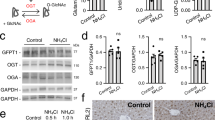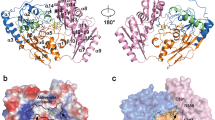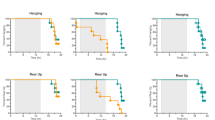Abstract
IT has been demonstrated that patients with liver disorders are particularly susceptible to ammonia intoxication1. Since ammonia is detoxified by urea synthesis, study of the enzymes of the Krebs–Hensleit cycle in the normal and abnormal liver might provide useful information. Decrease of liver arginase activity in patients suffering from cirrhosis and hepatic coma has been reported by Ugarte, Pino and Valenzuela2. In our study, arginase was crystallized from a ‘normal’ human and a cirrhotic human liver and the catalytic efficiency of the enzymes from the two sources was compared.
This is a preview of subscription content, access via your institution
Access options
Subscribe to this journal
Receive 51 print issues and online access
$199.00 per year
only $3.90 per issue
Buy this article
- Purchase on Springer Link
- Instant access to full article PDF
Prices may be subject to local taxes which are calculated during checkout
Similar content being viewed by others
References
Manning, R. T., Biochemical Clinics, 3, 225 (1964).
Ugarte, G., Pino, M. E., and Valenzuela, J., J. Lab. Clin. Med., 57, 359 (1961).
Bach, S. J., and Killip, J. D., Biochim. Biophys. Acta, 19, 273 (1958).
Van Slyke, D. D., and Archibald, R. M., J. Biol. Chem., 165, 293 (1946).
Author information
Authors and Affiliations
Rights and permissions
About this article
Cite this article
SUMMER, D., MANNING, R. Crystallization of Arginase from Normal and Cirrhotic Human Liver. Nature 207, 79–80 (1965). https://doi.org/10.1038/207079a0
Issue Date:
DOI: https://doi.org/10.1038/207079a0
This article is cited by
-
Activities of urea-cycle enzymes in chronic liver disease
Klinische Wochenschrift (1979)
-
Influence of steroids on urea-cycle enzymes in chronic human liver disease
Klinische Wochenschrift (1978)
Comments
By submitting a comment you agree to abide by our Terms and Community Guidelines. If you find something abusive or that does not comply with our terms or guidelines please flag it as inappropriate.



